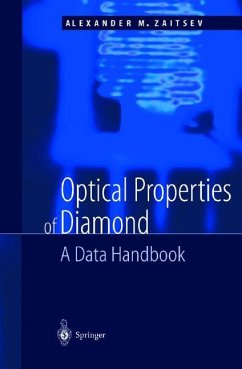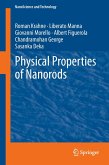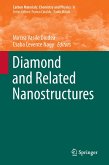This handbook is the most comprehensive compilation of data on the optical properties of diamond ever written. It presents a multitude of data previously for the first time in English. The author provides quick access to the most comprehensive information on all aspects of the field.
The unique properties of diamond are responsible for its pre-eminence as a gemstone, and give it a glamour and attraction unprecedented for any other mineral. As the first member of group IV of the periodic table of elements, carbon, in its crystalline form as diamond, has also fascinated scientists for at least 300 years. Many experimental techniques have been employed in the study of diamond, and of these, optical spectroscopy has proven one of the most fruitful. The absorption line at 415 nm, characteristic of "Cape Yellow" diamonds, was first documented by Walter in 1891. Further work on this absorption, now known as "N3", by the Indian school under Sir C. V. Raman in the 1930s and 1940s led to a basic understanding of the system, which they observed in both absorption and luminescence. The N3 center is a structural defect in the diamond, and the absorption of light occurs by exciting electrons in this defect from one well-defined energy state to another. When the electron returns to the original energy level, luminescence is produced. Detailed studies of natural diamonds over the subsequent 60 years have discovered large numbers of absorption and emission lines, characteristic of different defects. In 1904 Sir William Crookes showed that a colorless diamond could be turned green by long exposure to radium salts.
The unique properties of diamond are responsible for its pre-eminence as a gemstone, and give it a glamour and attraction unprecedented for any other mineral. As the first member of group IV of the periodic table of elements, carbon, in its crystalline form as diamond, has also fascinated scientists for at least 300 years. Many experimental techniques have been employed in the study of diamond, and of these, optical spectroscopy has proven one of the most fruitful. The absorption line at 415 nm, characteristic of "Cape Yellow" diamonds, was first documented by Walter in 1891. Further work on this absorption, now known as "N3", by the Indian school under Sir C. V. Raman in the 1930s and 1940s led to a basic understanding of the system, which they observed in both absorption and luminescence. The N3 center is a structural defect in the diamond, and the absorption of light occurs by exciting electrons in this defect from one well-defined energy state to another. When the electron returns to the original energy level, luminescence is produced. Detailed studies of natural diamonds over the subsequent 60 years have discovered large numbers of absorption and emission lines, characteristic of different defects. In 1904 Sir William Crookes showed that a colorless diamond could be turned green by long exposure to radium salts.
From the reviews of the first edition: "The book presents in a systematical manner the experimental and theoretical data on optical properties of diamond accompanied by short explanations and models. ... It will help diamond researchers to find a reference or assess the level of knowledge of a particular optical feature. ... The main benefit derived from his handbook is a quick access to the most comprehensive information on all aspects of the optical properties of diamond." (HD Bruggemann, Optik, Vol. 114 (11), 2003) "This handbook presents for the first time in English a multitude of data on the optics of diamond, which were previously published only in Russian. The author presents his own views alongside the options of other researchers." (Materials World, Vol. 9 (9), 2001)








